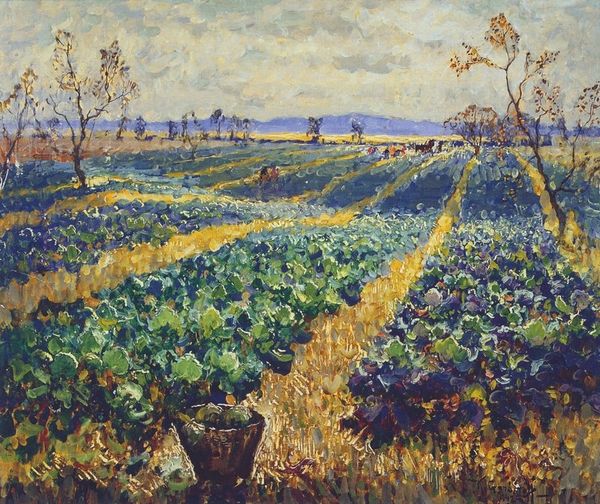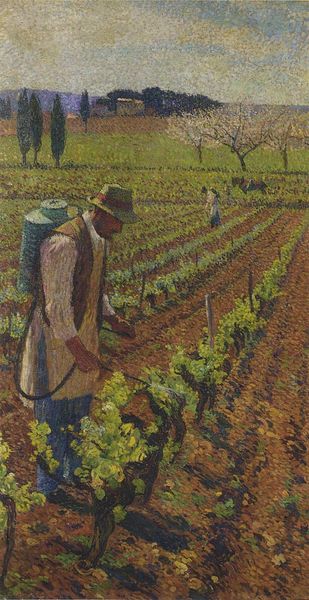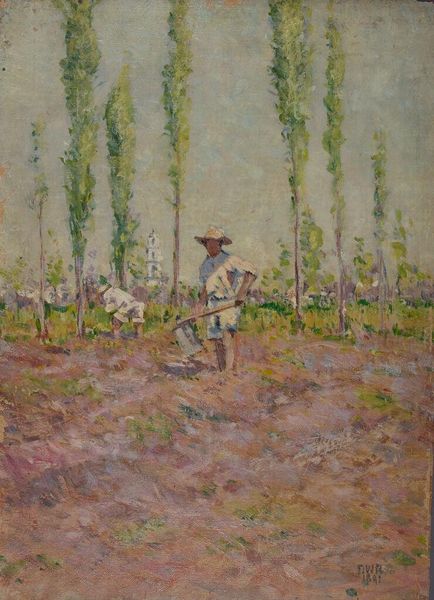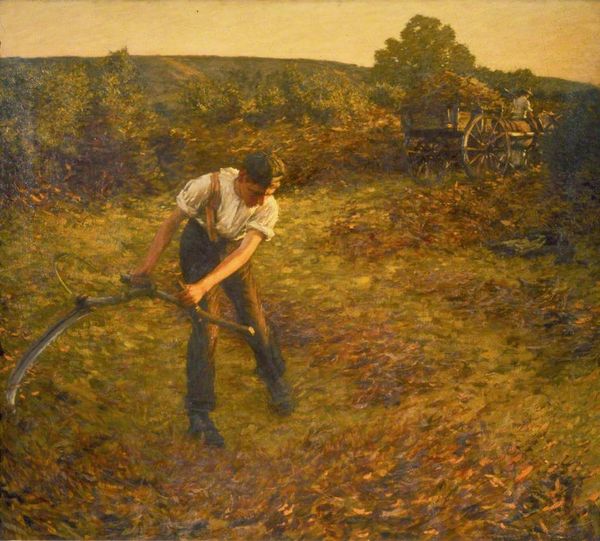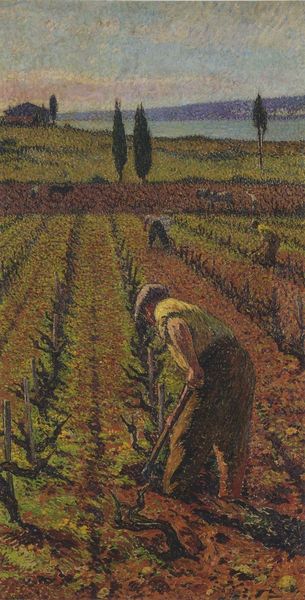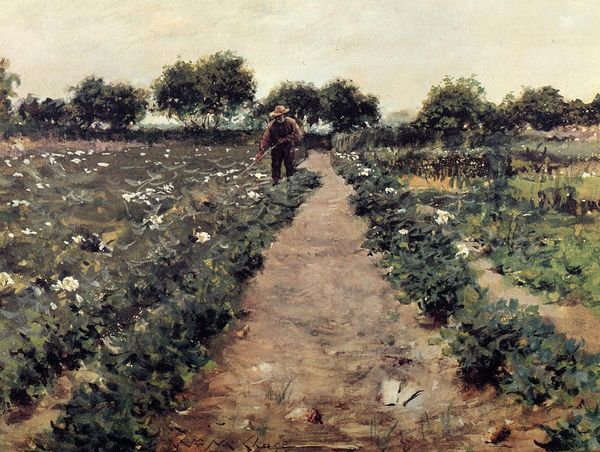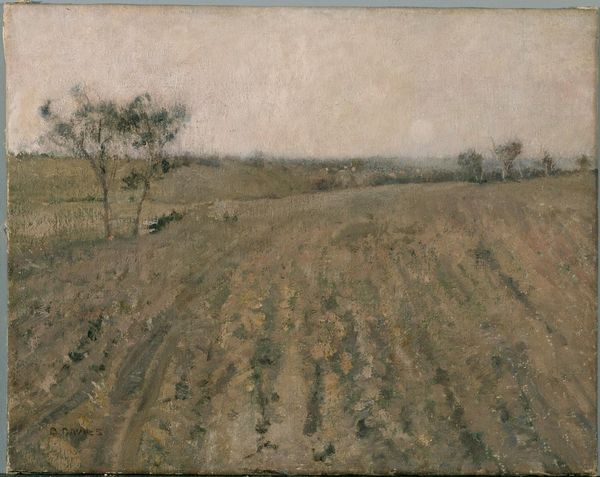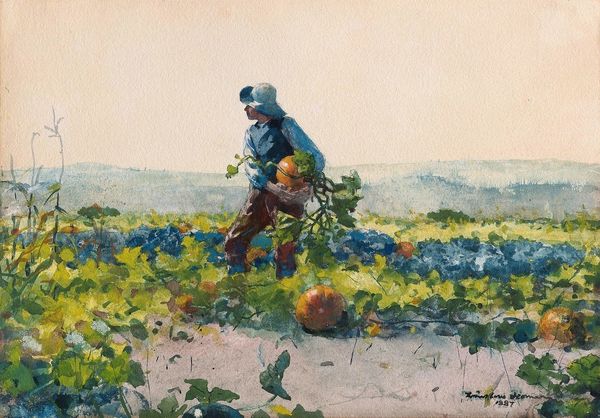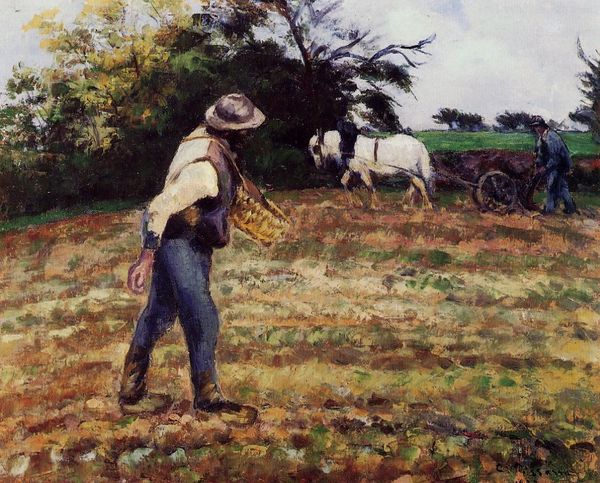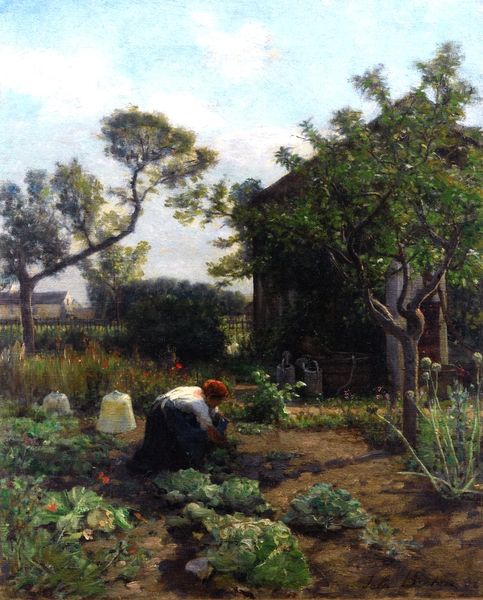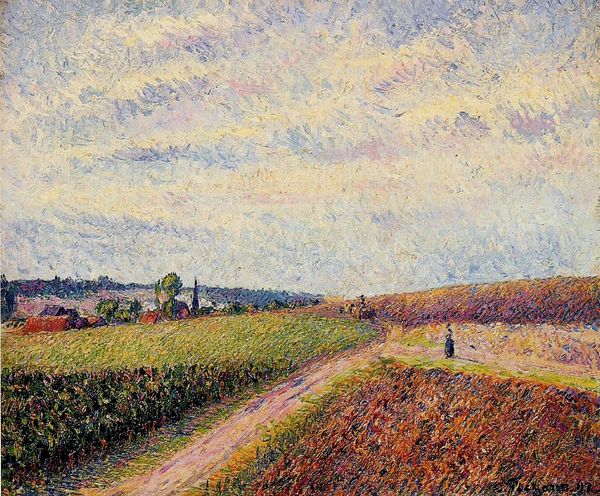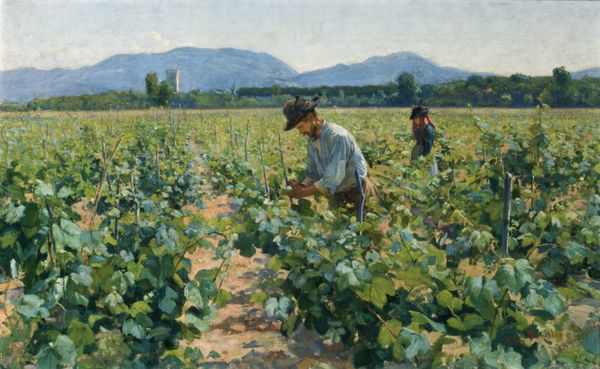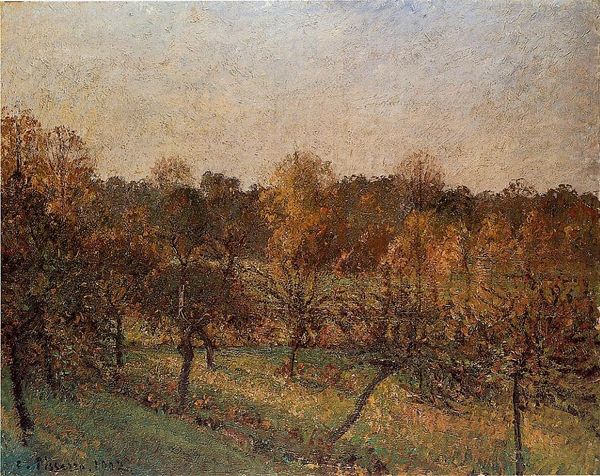
#
glasgow-school
#
the-seven-and-five-society
Copyright: Public domain
George Henry painted ‘The Hedgecutter’ with oils to represent the symbolic interplay between man and nature. Here, the hedgecutter embodies a timeless struggle and relationship with the natural world. Consider the hedge, a boundary both dividing and connecting spaces. The hedgecutter, then, becomes an agent of transformation, shaping the landscape. This act mirrors the ancient motif of the hero or deity who tames the wilderness, bringing order to chaos. We see echoes of this in classical mythology, where figures like Hercules perform labors to civilize the world. The tool in the hedgecutter's hand, though simple, is imbued with power. It's reminiscent of the scythe wielded by Chronos, the personification of time, or even the Grim Reaper. This connection evokes a sense of the cyclical nature of life and death, growth and decay. The image engages us on a subconscious level. We are reminded of our own role in shaping our environment, as well as the enduring power of nature to reclaim what is hers. It's a visual metaphor for the ongoing dance between humanity and the world around us, a dance that continues to evolve through time.
Comments
No comments
Be the first to comment and join the conversation on the ultimate creative platform.
